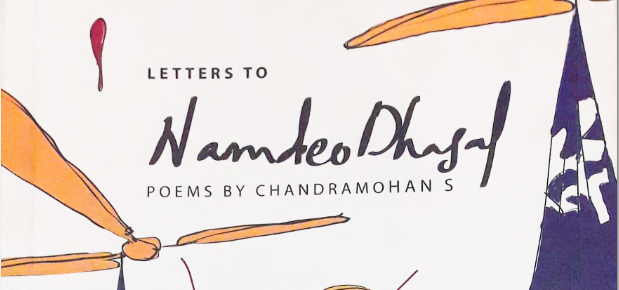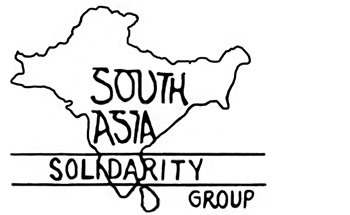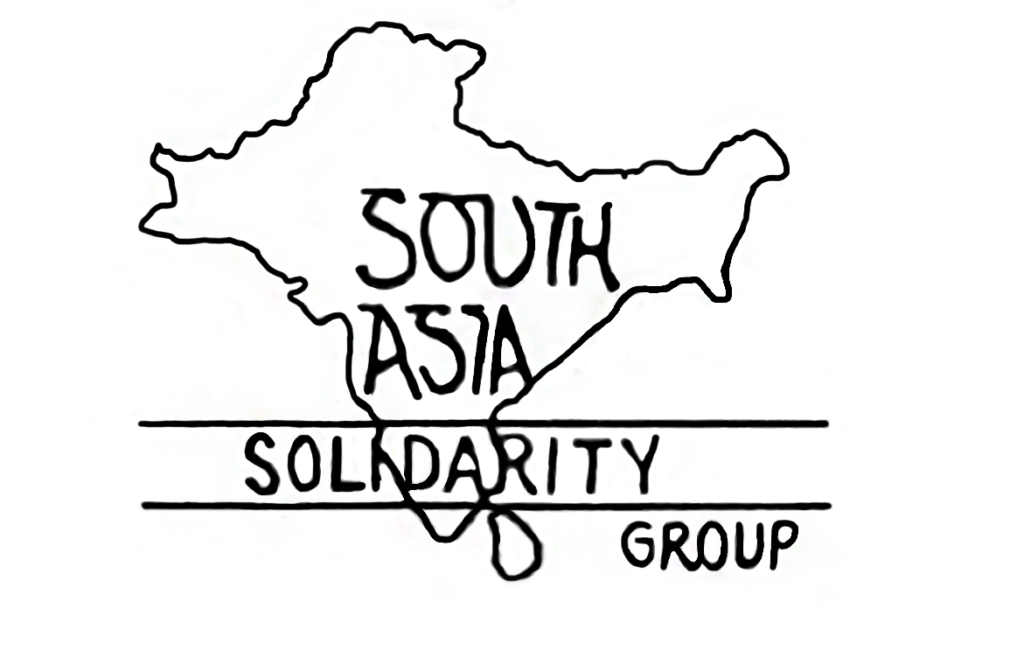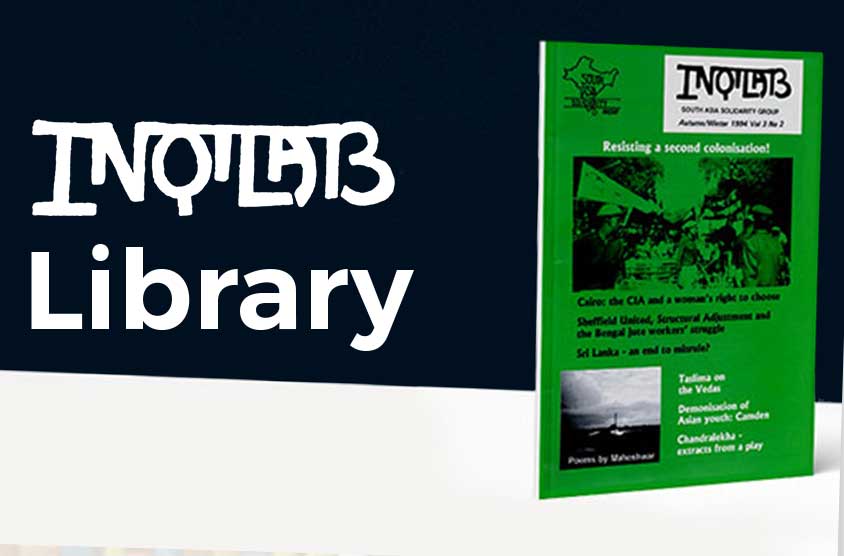- April 30, 2017
- Posted by: admin
- Category: News

Edited by Deeptha Achar (Desirepaths Publishers, 2016, 67 pages, Rs.150/US$ 6
ISBN 978-93-81030-75-2)
‘They ask me why do you write poems?
I write poems – people have the right to bear arms.’
These lines, taken from his one-stanza masterpiece Write Poetry, encapsulate the very essence of Chandramohan’s attitude in his second collection, Letters to Namdeo Dhasal. These poems are unapologetically weapons, fighting against the pre-modern notion of caste in all its insidious 21st century glory. As Deeptha Achar points out in her introduction, Chandramohan’s choice to write in English ‘renders caste as a contemporary category’.
By addressing his poems to Namdeo Dhasal, a celebrated left-wing Dalit poet and founder of the Dalit Panther Movement in 1972, Chandramohan situates himself explicitly within this tradition.

A fundamental concern in this book appears to be poetry itself, and Chandramohan devotes many lines to defining his particular brand of poetry, for example in Plus Size Poem, which consists entirely of defining itself by what it is not. The choice to personify his poem as an unconventional female figure is demonstrative of the wide range of perspectives Chandramohan fearlessly employs throughout the book; indeed, the poem’s bold statements on itself, such as ‘This poem walks the ramp with a self-edited gait/Without introduction or foreword from veterans’, or ‘This poem eludes the trap/In the hourglass of time’ could easily be applied to the entire collection. Chandramohan’s poetry speaks for itself, and will never become irrelevant because it acknowledges the ever-changing nature of the society it is concerned with. It deals with age-old structures and their modern, subtle manifestations in everyday life.
It is, however, impossible to overlook the precision of this collection – precision of setting, of time, of perspective. There is no sense of the often-used maxim of poetry that ambiguity is everything, and all poems must be open to interpretation. The language is extremely powerful, and often metaphorical, but it makes no claims to ambiguity. It looks the reader straight in the eye and tells them its experiences. It adopts certain perspectives – Dalit, Muslim, particular gender identities within these – with a specific purpose of resistance which requires a direct and often factual tone.
Caste in a Local Train, for example, is a poem encompassing a particular subject which we know we will be learning about from the title itself. This poem is hugely context-specific; it is an open rejection of any false claims to universality which are often demanded by mainstream poetry critique. Chandramohan has placed us in a local train, with caste as our focus, from the outset, and that is where we must remain in our reading.
Throughout the poem the reader is confronted with the sheer physical discomfort of the speaker, expressed through the metaphor of cricket: ‘Will I be trapped leg before wicket/If I attempt a bloodline crossover?’ This imagery is painful, it is designed to make the reader wince. It is the physical, visceral quality of this image that seems to convey the crux of the Dalit experience to a wider audience. The lines are framed as a question because the comfort of certainty, of knowing one is safe to embrace one’s identity, is denied to the speaker. The ‘Pakistani fast bowler’ seated opposite him is the perpetrator of this trap, this particular instance of a much wider oppression. But despite the gulf between them, the speaker holds a sardonic understanding of his opponent in this game of cricket: he is ‘camouflaged/in a three-piece suit/And an Anglicized accent’. Something has been taken from the man opposite, something has been done to him, the verbs tell us; he has been camouflaged and Anglicized. The speaker is prevented from embracing his heritage, but so is the bowler; he is a victim of colonialism. The speaker wishes to be camouflaged, while simultaneously recognising that this is not to achieve true emancipation, to be able to express one’s authentic self, but simply the best option for survival in a society layered with complex systems of oppression. This is just one example of how Chandramohan’s poems are never only concerned with one identity, with one perspective, but with the multi-layered experiences lived in South Asia every day.
In fact, Chandramohan extends the realm of his poems beyond South Asia to the rest of the globe. Thirteen Ways of Looking at a Black Beard positions us in a harsh present-day setting in which an era ‘Before the twin towers fell’ is the object of nostalgia, before Islamophobia reached its current heights in which a man’s beard can render him a target at immigration control. Chandramohan opens his poem with ‘the razor, shaving/hundreds of beards’, a symbol of forced, universal self-repression on the part of the world’s Muslims in the face of such stigma. The metaphor takes an even more sinister turn in the third stanza with ‘specs of blood’, and this clear signposting of violence is then articulated even more transparently by ‘Cuts on the map of the world’. This poem is not one person’s experience, it is that of many. It does not take place only in the privacy of a man’s home but in his day-to-day life in the wider world. Chandramohan does not stop here. He extends the subject matter and timespan of the poem to when ‘Some islands changed hands/Between imperial masters’. Here is an urgent reminder to the reader not to forget where this all started, the culpability of Western powers both in promoting terrorism and in the persecution of Muslims on the grounds of this terrorism. The poem has no qualms about declaring its anti-imperialist politics openly and boldly.
But all these references to the wider implications of modern-day Islamophobia do not detract in the slightest from the poem’s highly personal quality. The final stanza returns to the second person pronoun ‘you’, the poem’s protagonist, living the experiences born out of centuries of oppression in various forms. ‘History will catch up with you/In your rear-view mirror.’ These ominous final words contain more than the abrupt, jarring sense of a car-crash. There is a conviction here, that history ‘will’ affect your life, if you are Muslim. Nothing else is required; no room is left for doubt. Chandramohan’s poems do not gloss over these harsh consequences of particular identities. Instead, they take these identities and own them, presenting these consequences in no uncertain terms. As Chandramohan himself asserts, poems are weapons, weapons for revolution – if that is what you make them. Isn’t that, after all, what literature is all about?
Ananya Wilson-Bhattacharya


